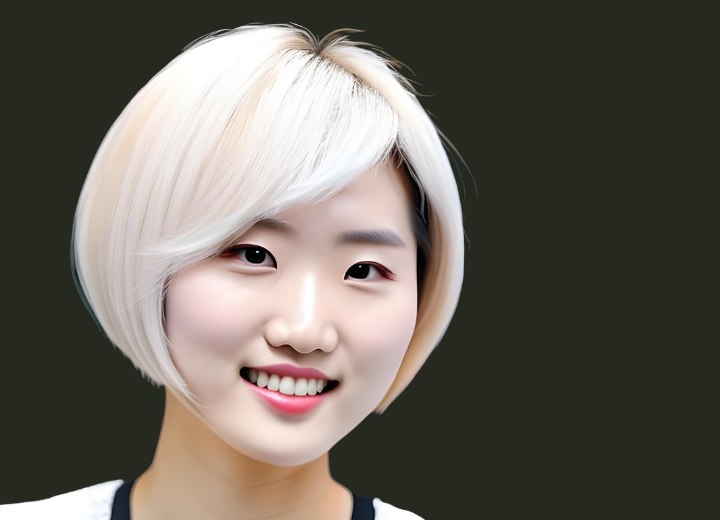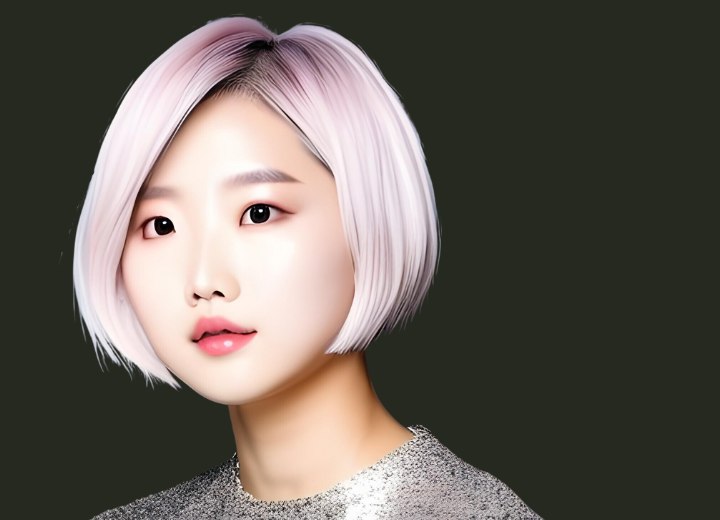Asian Hair (2)

Color:
Coloring Asian hair presents its own special challenges, because the natural color of virtually every Asian hair type is the darkest possible level and hue. In order to get any other color in Asian hair, you nearly always must lighten the natural color first. This can be extremely damaging to the hair's integrity if not done carefully.
It has been theorized that the uniformity of Asian hair color and the difficulties inherent in changing the color is the reason for the prevalence of brightly colored hair in Asian animated characters. However, in most cases, people with hair of similar color have worn hairpieces or undergone very intense color processing to achieve the colors.
Of course, a lot of women of Asian descent (not to mention others with equally dark hair types) have taken to wearing a color-tinting process that gives their hair a reflection of a specific color. In other words, the hair is colored without lightening and given a glazing treatment, so that when the light shines on the hair, the glints of reflected light shine with the desired color.
I've seen burgundy reds, magentas, lavenders, and even bold blues. These color treatments are subtle yet effective, and are great for those who must maintain a professional image but want some personality reflected in their look.

These can include techniques in which only the ends of the hair are bleached and colored, streaks, and even the popular ombre effect where the hair is lightened gradually so that it becomes lighter as you approach the ends of the hair shaft furthest from the scalp.
Finally, for those who don't wish to lighten their hair at all and who want color application that is temporary and can be removed with a shampoo, many are using the technique called "chalking" where actual chalk is used to apply an opaque color to the hair. In some cases, oil pastels are used as they provide a brighter hue (but may need a clarifying shampoo to remove easily).

Pro Tip: If you want the color to stand out more on darker shades of natural color, try spraying the hair with hairspray and allowing the hairspray to dry completely before applying the chalk/pastel color. You may want to give two or three hairspray applications in light misting to avoid clumping, as opposed to saturating the hair with hairspray in one application.
The hairspray will act as a sealant and keep the chalk/pastel in place on the surface of the hair and allow for easier removal. Furthermore, it will give the hair a texture that the chalk/pastel can adhere to more easily, providing better results.
©Hairfinder.com